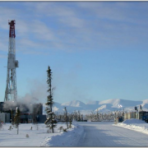Economic Analysis of Frontier Projects – The Need for Realism
Economic Analysis of Frontier Projects – The Need for Realism
Categories: Lectures and Seminars | Intended for Anyone

2130 Herzberg Laboratories
1125 Colonel By Dr, Ottawa, ON
Contact Information
Sarah Adams, (613) 520-2600 Ext. 5633, sarah.adamsaston@carleton.ca
Registration
No registration required.
Cost
Free
About this Event
Host Organization: Department of Earth Sciences
More Information: Please click here for additional details.
Clinton Tippett,
Carleton University Alumnus
Oil and gas projects are routinely assessed using discounted cash flow analysis. Models developed for this purpose run the gamut from very simple to highly complex but in all cases depend on good calibration and proper collection of input parameters and of risks to provide reliable results. One can certainly use a simple success case approach with optimistic, high side values. In doing so, one creates the impression of a highly robust project. This can be very misleading and will create unrealistic expectations for both profitability and production – and in turn for the amount of wealth that is to be generated for possible sharing amongst various stakeholders.
Foremost amongst technical inputs are reserve calculations (porosity, pay thickness, water saturation, recovery efficiency and various losses). Use of unrepresentative high end values for these will sway the model. Likewise the production profiles selected may not be typical. Even when the project is up and running, its reliability is impacted by weather, mechanical failure and seasonal effects. Using a model with full production 365 days a year is simply not realistic. Models also obviously need to include appropriate full cost midstream processing and transportation fees.
Both technical and non-technical risks are also critical as they can effectively kill a project. In a Frontier setting where calibration is poor, aspects such as reservoir risk, source risk and charge timing risk may lead to projects not being pursued - likewise for regulatory and related factors. These scenarios are portrayed in decision trees as multiple “off ramps”, each of which creates an economic burden.
As the time value of money has impacts on both costs and revenue streams, the chronology of a project is a critical factor. Models need to acknowledge that the gradual growth of the knowledge base and de-risking of the project create an expensive legacy of front end costs that can only be offset by strong ultimate project performance. Significant delays, if anticipated, can also throw an otherwise attractive project into the negative column and off the table.
It is incumbent upon governments to develop for their own use realistic models so that they can ensure that their level of take does not create an excessive burden on projects. The prize offered to industry must be adequate enough to carry the additional burdens of dry holes and the “off ramps”. Multiple scenarios can be created and economic regimes with adequate flexibility can be crafted. The added value of such models is that it enables governments to identify those factors, be they technical or otherwise, that are creating the downward pressures and to move to correct or at least to mitigate them.
This presentation will discuss many of the real world issues that affect economic analysis with the conclusion that it is essential for all to realize that we are generally dealing with ordinary geese and not the golden goose.